Free, downloadable resources to help promote the positive use of technology among youth and young people. Research-informed, carefully curated, and practical to implement.

Chat/Text Abbreviations & Acronyms
This updated resource helps parents and educators understand the abbreviations and acronyms commonly used by young people in text messages, social media, and online chat rooms. It is meant to serve as a bridge between generations, making it easier to monitor and understand youth conversations online, particularly when concerns about cyberbullying or online safety arise. Citation […]

Social Media, Cyberbullying, and Online Safety Glossary
In our Glossary below, we define the terms you need to know in the realm of social media, cyberbullying, and online safety, so that you are increasingly informed about technological jargon as you work with the youth under your care.(You can also download a distributable PDF of our Social Media, Cyberbullying, and Technology Terms Glossary). […]
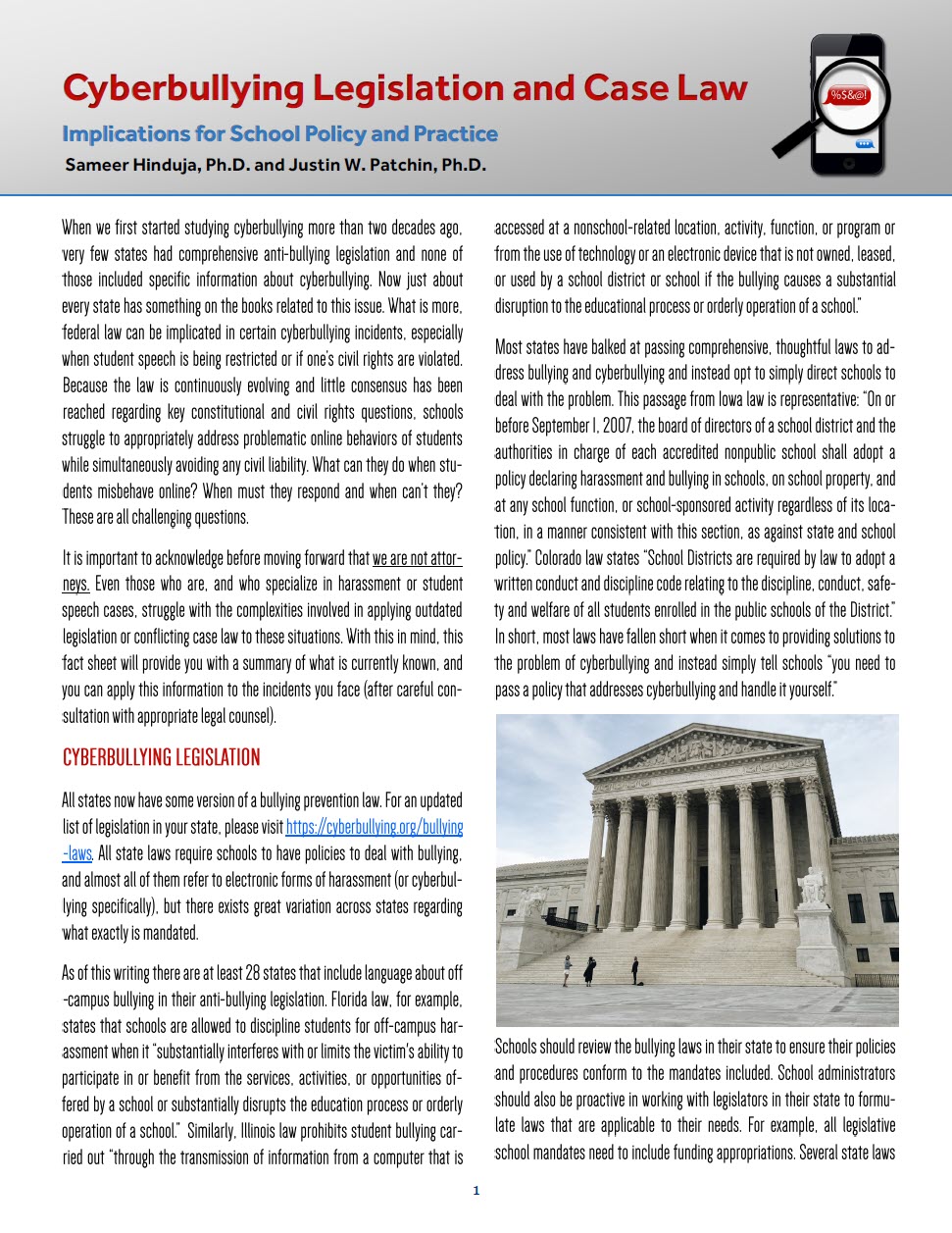
Cyberbullying legislation and case law: Implications for school policy and practice
This Fact Sheet provides a summary of important court cases and pending legislation that can help school administrators evaluate and improve their current cyberbullying policies and procedures. Hinduja, S. & Patchin, J.W. (2024). Cyberbullying legislation and case law: Implications for school policy and practice. Cyberbullying Research Center. Retrieved [insert date], from https://cyberbullying.org/cyberbullying-legal-issues.pdf Download PDF
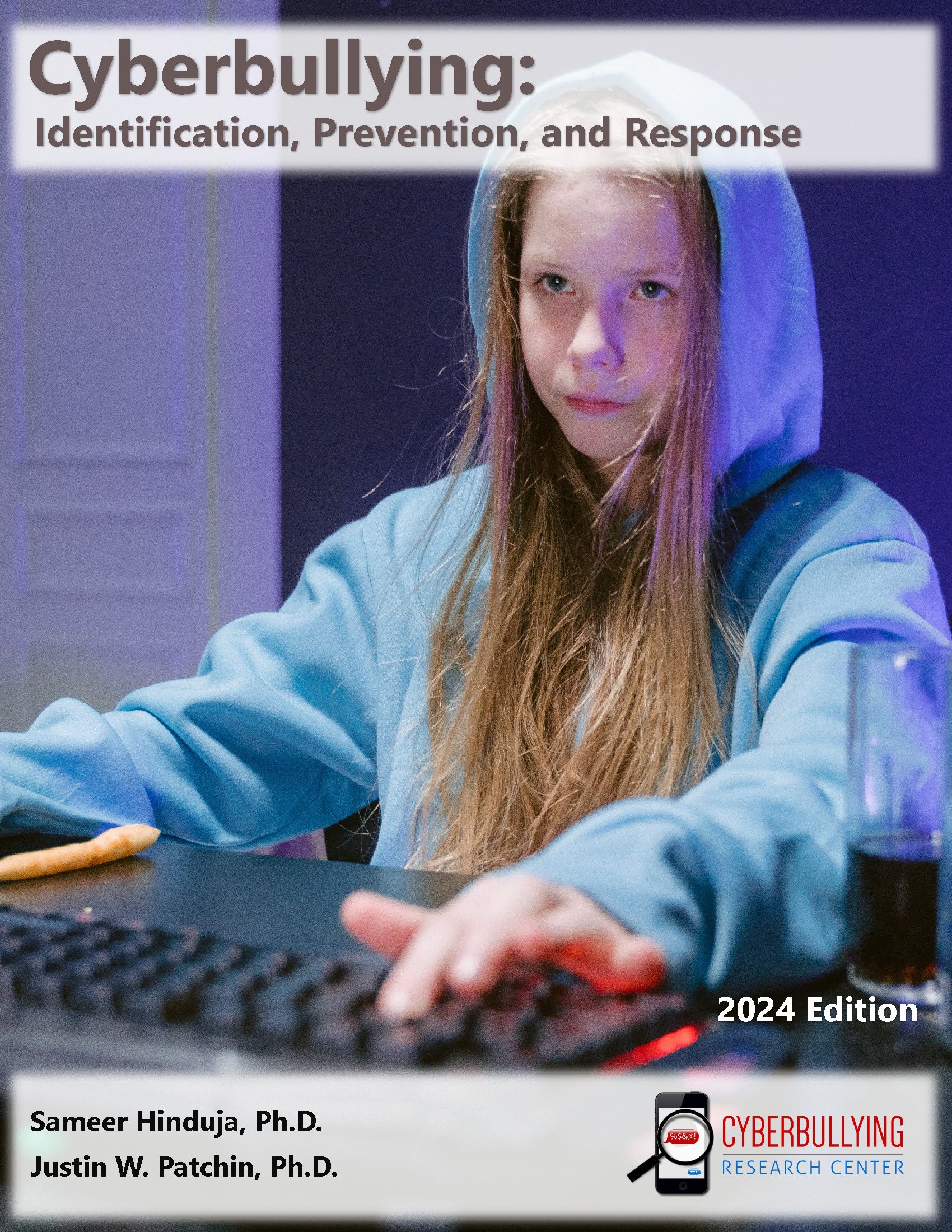
Cyberbullying Fact Sheet: Identification, Prevention, and Response
UPDATED for 2024! This detailed guide is a nine-page summary – filled with as much useful information as possible – to equip educators, parents, and other youth-serving adults to spot cyberbullying, respond to it appropriately and meaningfully, and to prevent its future occurrence among those they care for. If you only have time to read […]
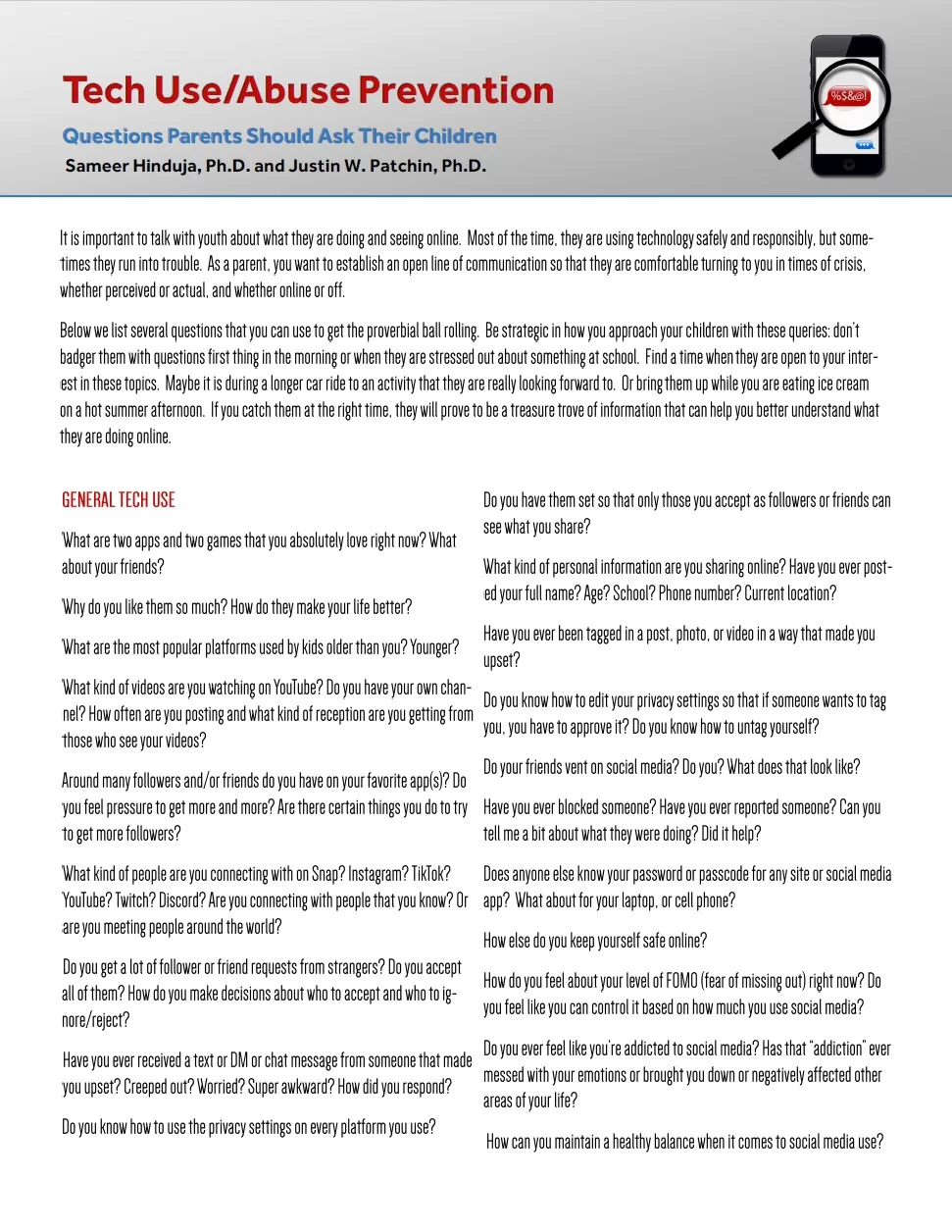
Tech Use/Abuse Prevention: Questions Parents Should Ask Their Children
Spanish Translation Available Here It is important to talk with youth about what they are doing and seeing online. Most of the time, they are using technology safely and responsibly, but sometimes they run into trouble. As a parent, you want to establish an open line of communication so that they are comfortable turning to […]
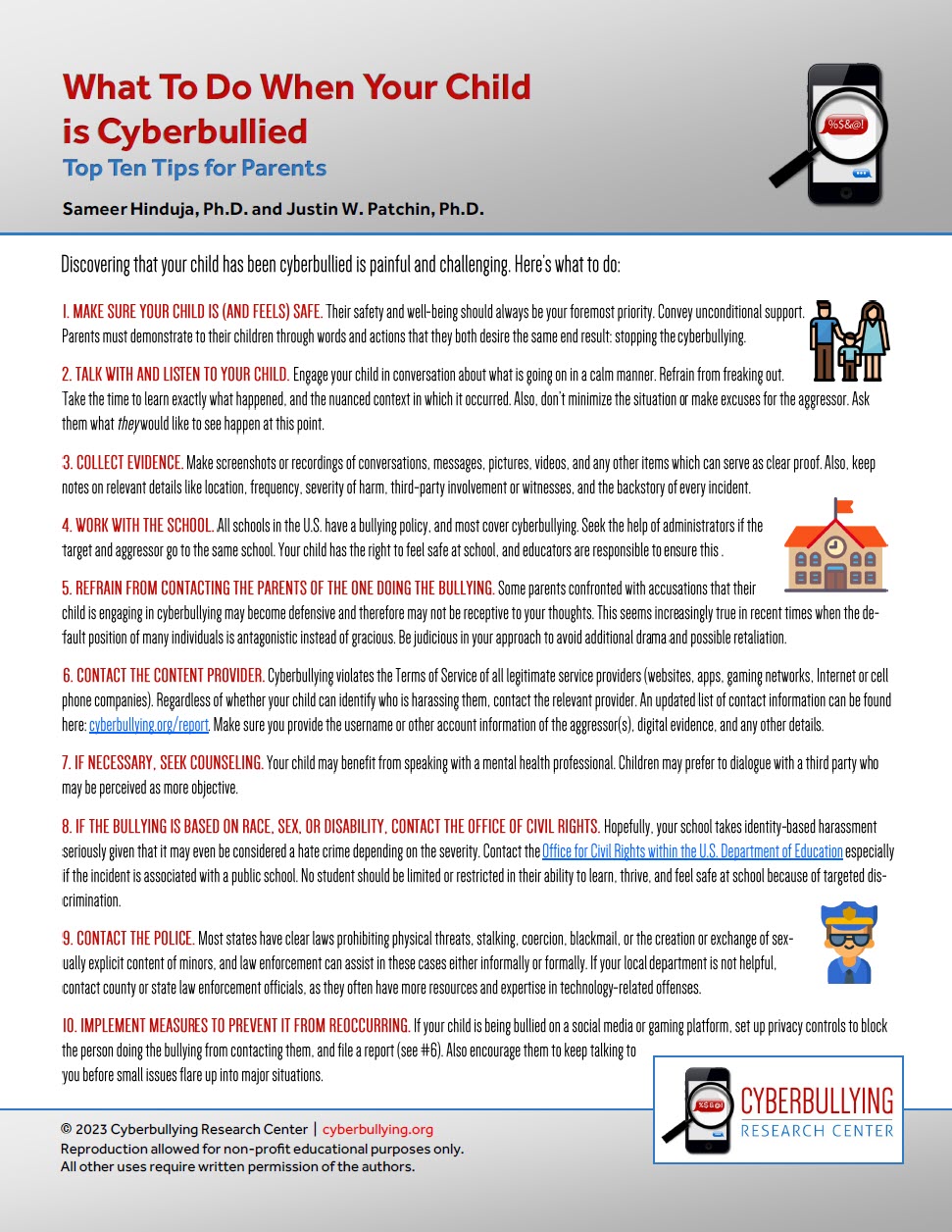
What To Do When Your Child is Cyberbullied: Top Ten Tips for Parents
(For a formatted .pdf version of this article for distribution, click on the image above [or click here]). Spanish Translation Available Here Discovering that your child is being cyberbullied is painful and challenging. Here’s what to do: 1. MAKE SURE YOUR CHILD IS (AND FEELS) SAFE. Their safety and well-being should always be your foremost […]
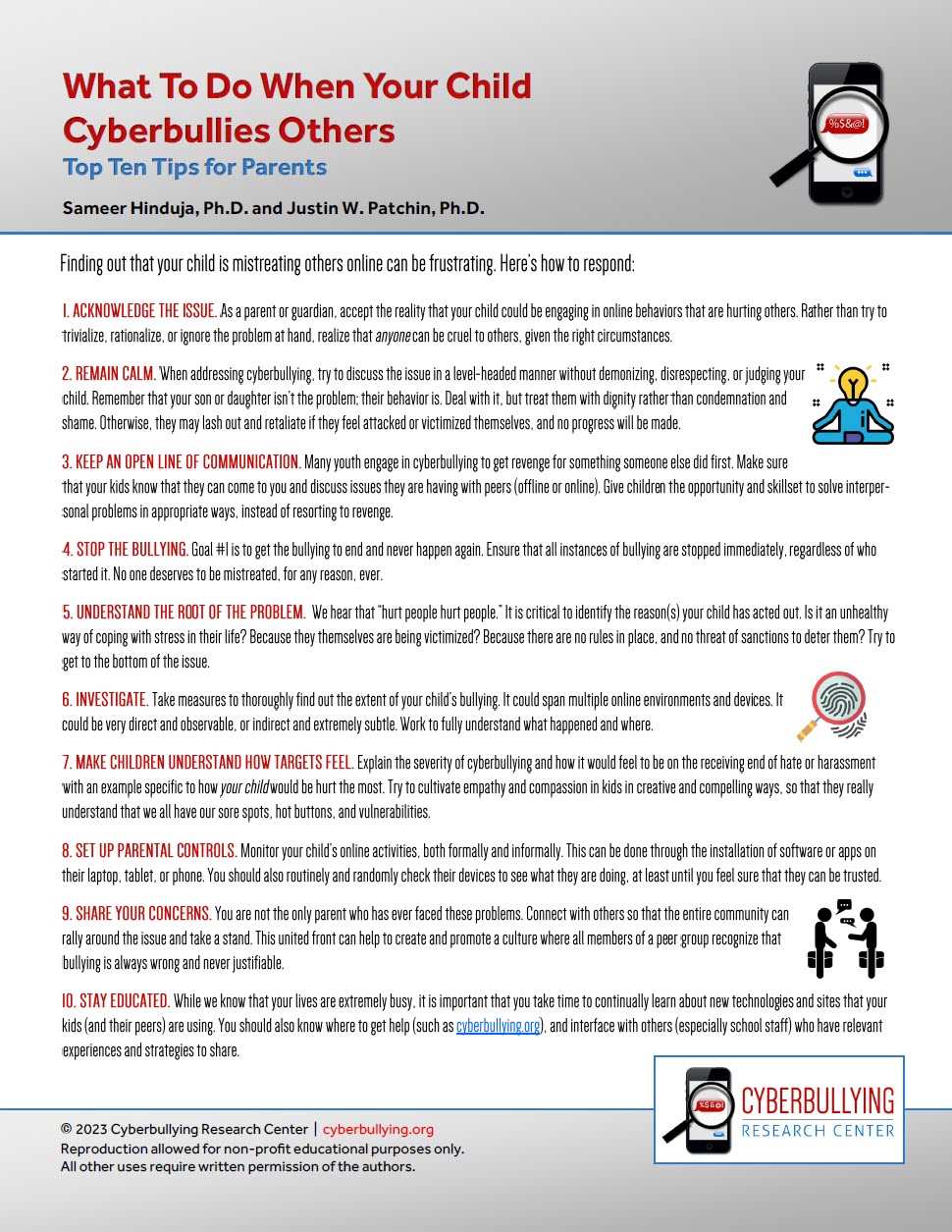
What To Do When Your Child Cyberbullies Others: Top Ten Tips for Parents
(For a formatted .pdf version of this article for distribution, click on the image above [or click here]). Spanish Translation Available Here Finding out that your child is mistreating others online can be frustrating. Here’s how to respond: Citation information: Hinduja, S. & Patchin, J.W. (2023). What To Do When Your Child Cyberbullies Others: Top […]
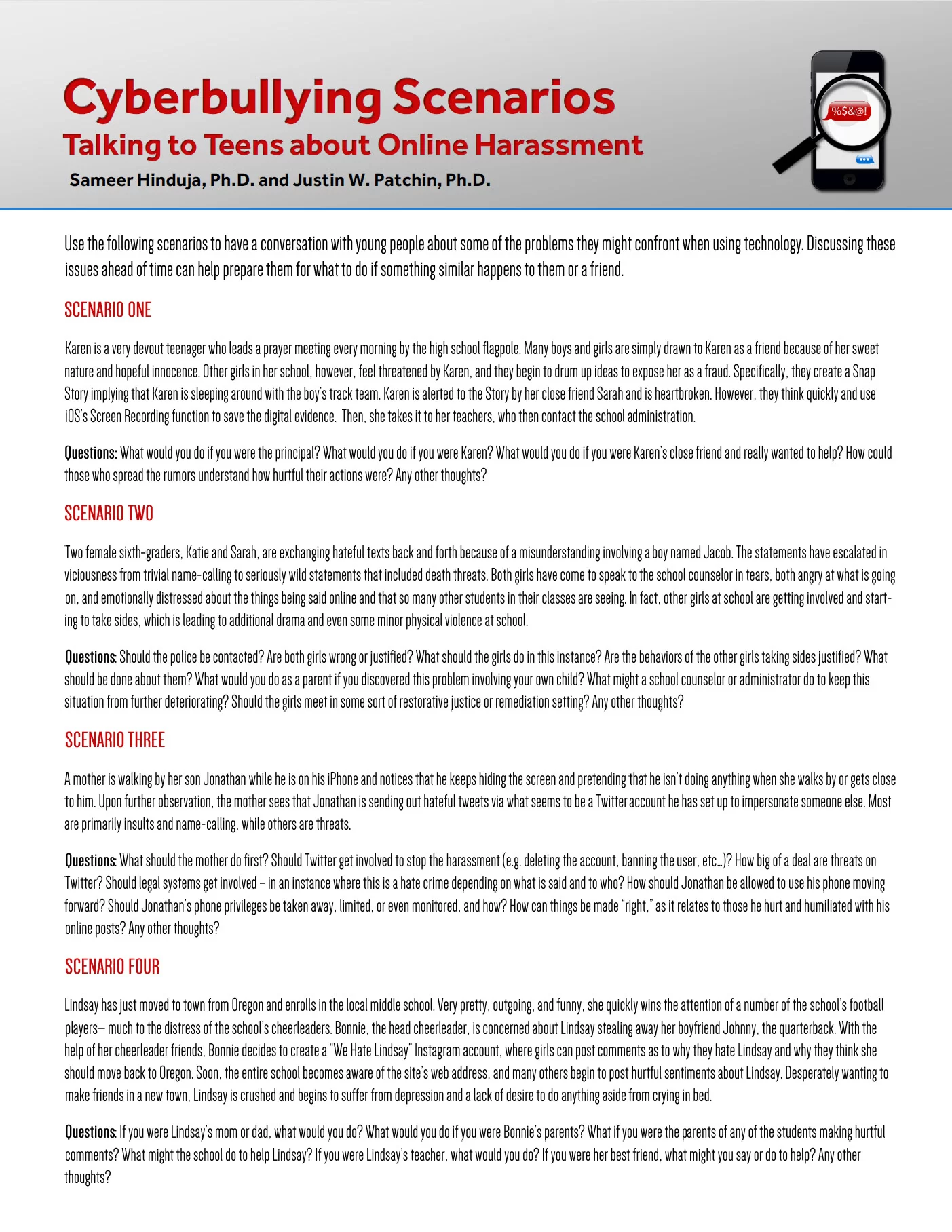
Social Media and Tech Misuse Scenarios
This resources provides scenarios that parents, educators, and other adults can use to discuss issues that may come up when young people are using technology. Hinduja, S. & Patchin, J. W. (2023). Social Media and Tech Misuse Scenarios. Cyberbullying Research Center. Retrieved [insert date], from https://cyberbullying.org/Social-Media-and-Tech-Misuse-Scenarios.pdf Download the Scenarios
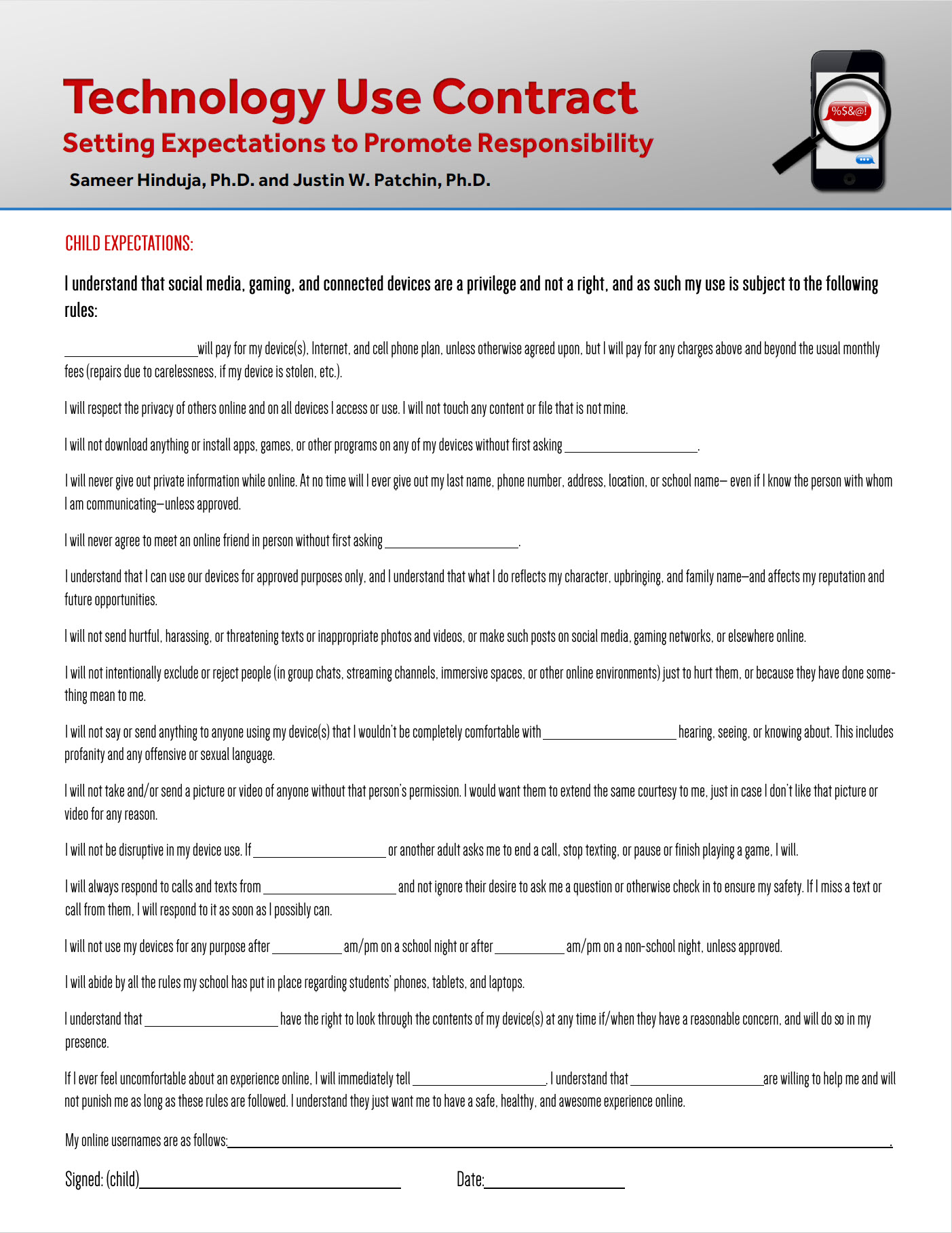
Technology Use Contract
Use this Technology Use Contract to establish an open line of communication regarding the child and parent expectations when it comes to using technology. Download PDF
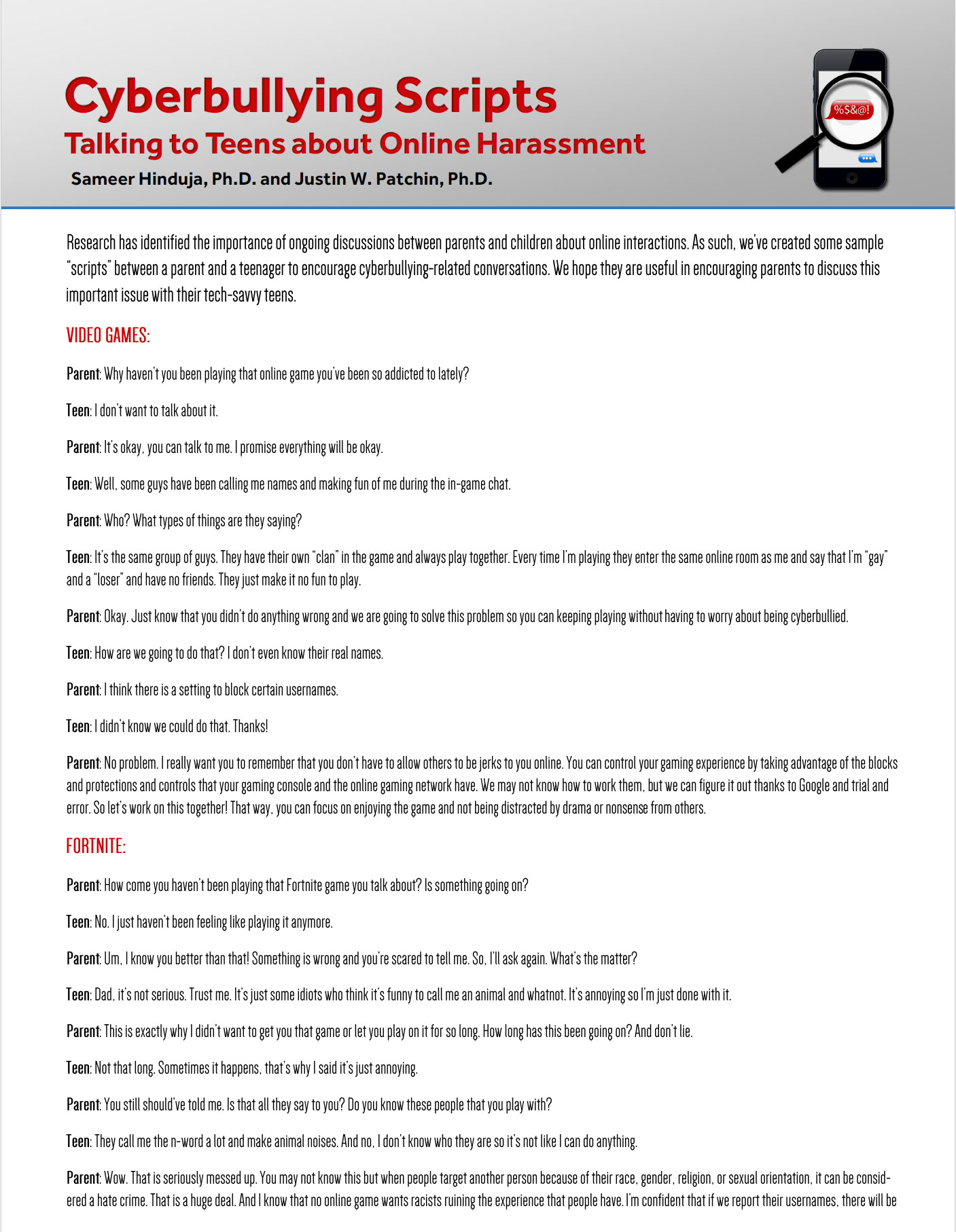
Cyberbullying Scripts for Parents to Promote Dialog and Discussion
Provides parent/teenager “scripts” to promote dialogue and discussion about cyberbullying.

